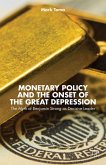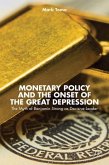The Great Depression began on "Black Tuesday" with the Wall Street Crash of October, 1929 and rapidly spread worldwide. The market crash marked the beginning of a decade of high unemployment, poverty, low profits, deflation, plunging farm incomes, and lost opportunities for economic growth and personal advancement. Although its causes are still uncertain and controversial, the net effect was a sudden and general loss of confidence in the economic future. The usual explanations include numerous factors, especially high consumer debt, ill-regulated markets that permitted malfeasance by banks and investors, cutbacks in foreign trade, lack of high-growth new industries, and growing wealth inequality, all interacting to create a downward economic spiral of reduced spending, falling confidence, and lowered production. The initial government response to the crisis exacerbated the situation; protectionist policies like the 1930 Smoot-Hawley Tariff Act in the U.S. strangled global trade as other nations retaliated against the U.S. Industries that suffered the most included agriculture, mining, and logging as well as durable goods like construction and automobiles that people postponed.
Bitte wählen Sie Ihr Anliegen aus.
Rechnungen
Retourenschein anfordern
Bestellstatus
Storno








